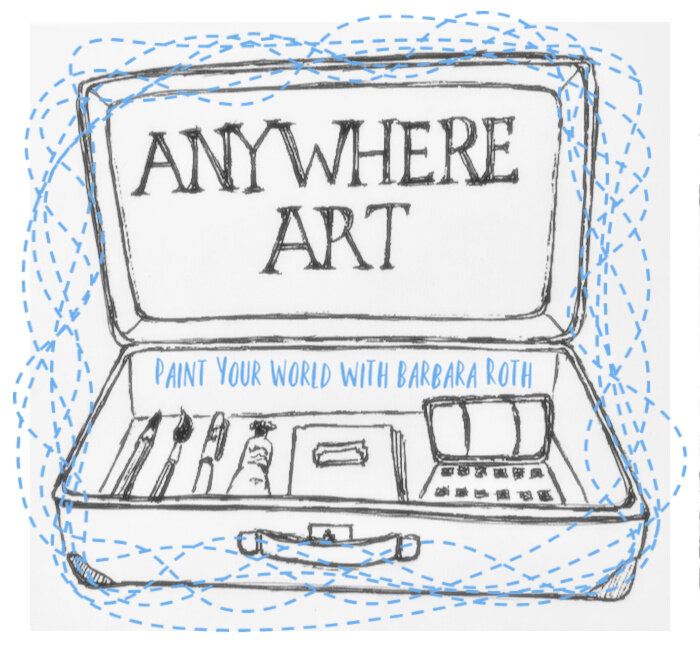Lesson 26 - Placing Greens in Your Painting Using a Value Sketch
This week I want to introduce you to using a value sketch. A value sketch is a line drawing that has shading in at least include 3 values, light, medium and dark + the white of the paper. If you squint or close one eye when you look at the subject of your painting you are supposed to see the values simplified. For this lesson I did a quick thumbnail sketch and shaded it. I tried to make it look a bit darker on the table because it was in the shade and the photo I was using as reference did not show that as well as it would have looked if I had been sitting at the table drawing it.
It is really helpful to use your value sketch as a roadmap for your painting. It will tell you where to put your dark, medium and light paint. In the case of this painting I hope it will tell you where to paint your dark, medium and light greens.
Lets review how to mix greens: the easiest option is to use Sap Green as a base color and add to it. Light or darken it by adding more or less water. You can also lighten Sap Green mixing in yellow or glazing over a dry layer of sap green with yellow. To darken sap green add a darker color of paint, like Cobalt Blue, Ultramarine Blue, Prussian Blue , Dioxine Violet or Burnt Sienna. You can also mix Cerulean Blue into Sap Green to get a lovely gray green suitable for the greens on a lavender bush or try adding yellow ochre to sap green which will make a wonderful Olive Green. Last but not least, you can add the complement of Green which is red (complement is a color's direct opposite on the color wheel), and the complement will dull it down so you will have sort of a khaki green.
When you paint a landscape, another tool you can have in your pocket to paint a better picture is the technique of "atmospheric perspective." That means you use bright colors and more details in the foreground of your painting and duller colors and less detail in the background of your painting. In the painting for this lesson, I used a brighter yellow green for the middle ground (the lawn behind the chair, which would be brown not yellow green if this were a picture of my California neighborhood). I had to use a brighter color for the middle ground because I wanted to show that the lawn was in the sunlight. I tried to use brighter colors on the objects on the table because they were in the foreground. Sometimes I needed to dull the brighter colors down a bit to make them look like they were in the shade. Plus I added a glaze of watery cobalt blue over the table cloth so it would look like it was in the shade.
Your assignment this week is to either use my drawing and copy the value sketch or find a simple landscape either in a photo or outside in the real world and make a simple value sketch, then paint a simple painting using light, medium and dark greens as well as other colors. Let me know how it goes for you.
Lesson 27 Summertime Color Fun
This week's assignment, is to open up your painting box and paint like a mad scientist, an astronaut or a free spirit. Just slop those colors on the painting fearlessly! Try out different color combinations, colors you wouldn't dream of actually painting a house except in your imagination. MOST of all, have fun as you paint. You can use my example of the building or make up your own but be sure to try out lots of colors. Feel free to use a printer or copier and print out multiple images of your drawing on watercolor paper. With your copies you will be able to paint lots of paintings more quickly and that will enable you to try out more color combinations.
